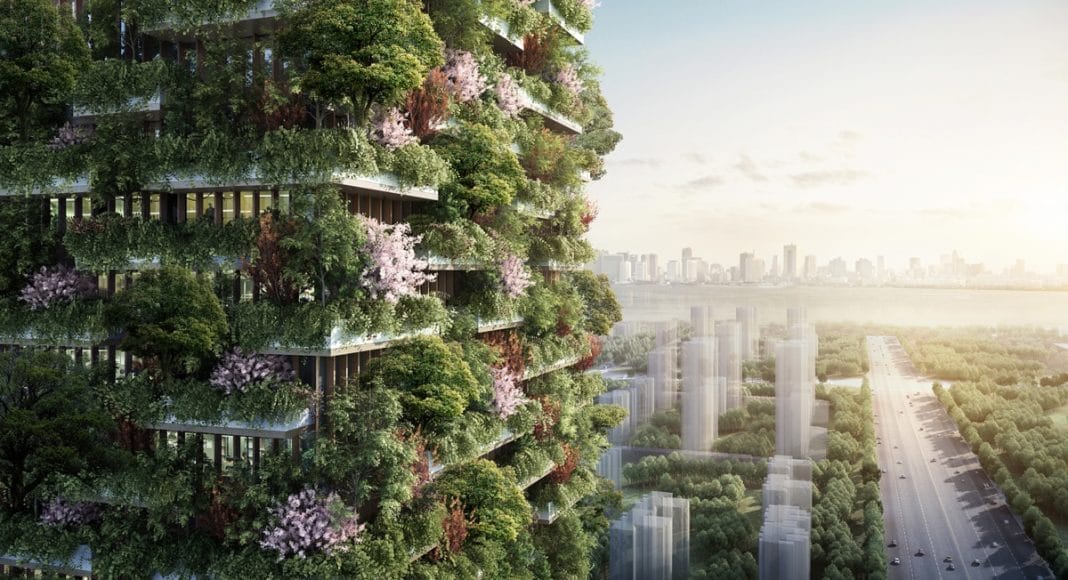How do you find space in the city? As more buildings and more people and more everything move into such a condensed space, the natural equilibrium runs askew. The air we breathe requires filtration through photosynthesis and for photosynthesis to occur, we need plants to fight pollution. Lots of healthy plants.
So as some cities face pollution problems, where do you find the room?
You go vertical. Italian architect Stefano Boeri has designed the first vertical forests for the city of Nanjing, China. The Nanjing Towers, as they’re calling the forests, will produce an estimated 132 pounds of oxygen every day for the city.
-
Related Story: “Australians Can’t Swim Their Beaches Because Of Poop”
The towers will stand 656ft and 354ft respectively, and support more than 1,000 trees and 2,5000 shrubs from 23 various local species. The verticals forests will aim to regenerate the city’s biodiversity to its natural state.
The taller tower will hold offices, a museum, a green architecture school, and a rooftop club. The second tower will host a 247-room Hyatt hotel and rooftop swimming pool. A podium 65 feet high will include shops, restaurants, and a conference hall. Balconies on the buildings will allow inhabitants to get up close to the nature thriving on the building facades.
Boeri has also designed Vertical Forest in Milan that have already been built and conceptualized a similar building in Lusanne, Switzerland. Though these will be the first vertical forests in Asia, there are already tentative plans to build more in Shanghai, Guizhou, Shijiazhuang, Liuzhou, and Chongqing, according to inhabitat.
-
Related Story: “San Francisco Plagued By Mysterious Rotten Egg Smell”
Boeri also will try to popularize the concept of vertical forests through his book, A Forest City, published by the Tongji University. It is schedule for release in April.


